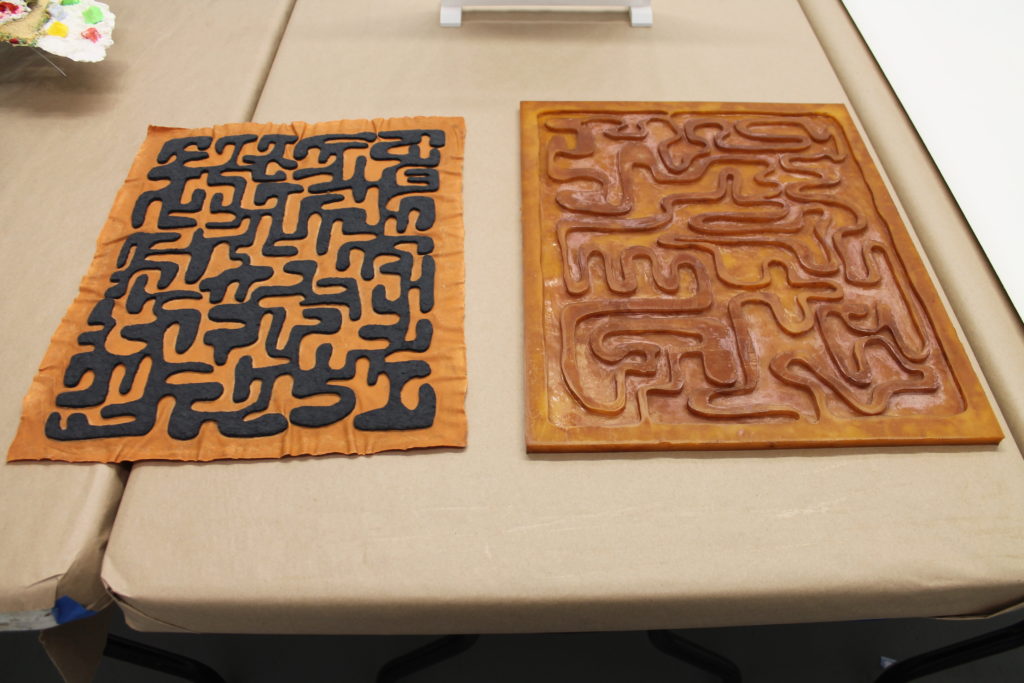At This Esteemed 40-Year-Old Papermill, Artists Reinvent What Paper Can Do


Jannah Greenblatt

Dieu Donné Papermill was founded in 1976 with the mission to expand and facilitate the creative possibilities of papermaking—and it hasn’t stopped pushing those boundaries since. From the beginning, the organization has hosted a wide array of established and emerging artists in prestigious residencies. By bringing them together with a master papermaker to realize their visions, Dieu Donné allows artists to bring their practice to a wholly new—and often overlooked—form.
The possibilities of papermaking are surprisingly varied. Colorfully pigmented pulp can be squeezed, brushed, stenciled, or spread, not unlike paint. Fabric or thread can be embedded or pressed into fibers, resulting in indented patterns. Paper can even be fully three-dimensional when pulp is built up or molded into sculptures or reliefs, with results that span from the stunningly delicate to the surprisingly robust.
artnet Auctions is pleased to partner with Dieu Donné for an end-of-year auction that highlights the full range of techniques and artistic styles developed throughout the papermill’s esteemed history. We’ve gathered a selection of some standout examples below.

Works by Glenn Ligon at the Dieu Donné Papermill. Courtesy of artnet Auctions and Dieu Donné.
In two artworks, Self-Portrait at Seven Years Old and Self-Portrait at Eleven Years Old, Glenn Ligon adopts images of Stevie Wonder and James Brown. Here, the artist and his master collaborator used the technique of stenciling on liquid, pigmented pulp. This process is where papermaking is most like painting, in that the liquid pigment is applied directly to a layer of wet pulp. Unlike painting, however, the wet sheet is dispensed of water using several tons of pressure under a hydraulic press. The result is that the fibers of the base layer and the applied pigment are fused into a single, unified sheet.
During his collaboration with Dieu Donné, Chuck Close also made self-portraits. In one piece from 2000, Close used thick, pigmented pulp in grayscale and further enhanced the work with pochoir, a method of stenciling, resulting in an especially textural rendition of his iconic visage.
In Close’s second collaboration with the papermill in 2007, he made a ghostly self-portrait out of an otherwise simple sheet of paper using a watermark. Watermarking is the traditional means by which a papermill identifies its product. In this process, the density of the paper pulp is thinner in a specific area of the paper, creating an image or pattern with a small, discreetly embedded logo or emblem. In Close’s work, the watermark takes center stage as an artwork in and of itself. Because the watermark can be seen most clearly when illuminated from behind, this artwork is presented in a frame with glass on both sides. The resulting image is subtle and luminous.

A cast cotton print by James Siena next to its silicone mold. Courtesy of artnet Auctions and Dieu Donné.
James Siena’s When I Was Ten is a dramatic, maze-like composition that exemplifies the merging of two and three dimensions. The work’s deep relief was created using molded pulp that was pressed and fused onto a thin sheet of abaca, a plant often used to make paper. Through the careful process of pressing and drying, the black pulp fused to the thin, skin-like sheet, and the varying weight and evaporation of water created a gentle puckering where they meet. A silicone mold held the black pulp in place, resulting in a relief that stands one full inch thick from its surface.
To learn more about these and other paper works currently live for bidding, browse artnet x Dieu Donné: Pigment and Pulp on artnet Auctions now through December 27, 2018.